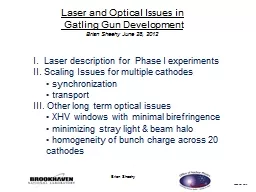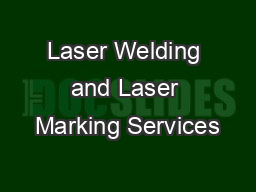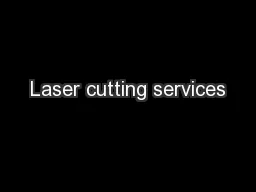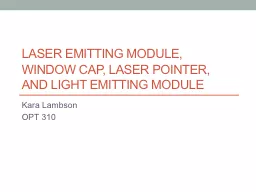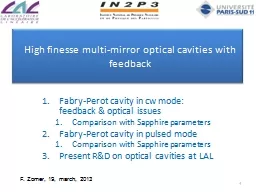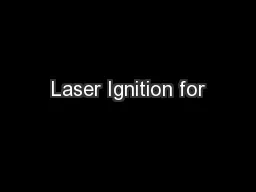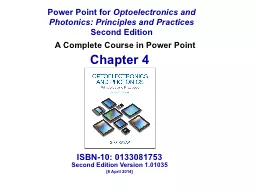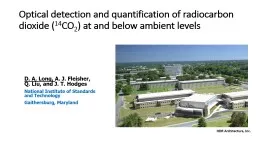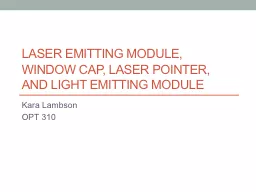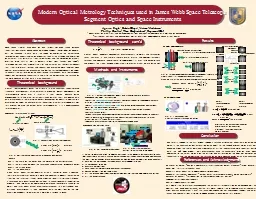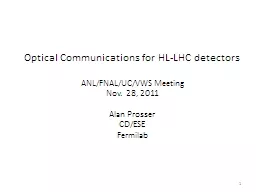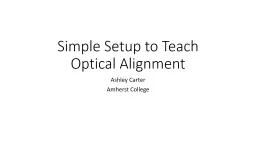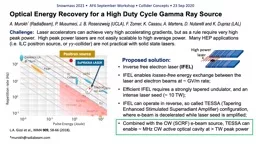PPT-Laser and Optical Issues in
Author : natalia-silvester | Published Date : 2016-04-07
Gatling Gun Development Brian Sheehy June 28 2012 I Laser description for Phase I experiments II Scaling Issues for multiple cathodes synchronization transport III
Presentation Embed Code
Download Presentation
Download Presentation The PPT/PDF document "Laser and Optical Issues in" is the property of its rightful owner. Permission is granted to download and print the materials on this website for personal, non-commercial use only, and to display it on your personal computer provided you do not modify the materials and that you retain all copyright notices contained in the materials. By downloading content from our website, you accept the terms of this agreement.
Laser and Optical Issues in: Transcript
Download Rules Of Document
"Laser and Optical Issues in"The content belongs to its owner. You may download and print it for personal use, without modification, and keep all copyright notices. By downloading, you agree to these terms.
Related Documents

